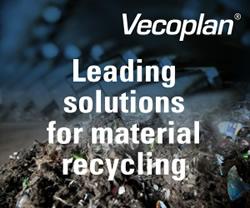A new era for hydrogen energy unveiled by summer students at DNV GL
How can hydrogen help Japan transition to renewable energy? Students working for DNV GL this summer made the case for the floating installation 'Jidai that produces hydrogen from seawater and wind energy.
Plug Power Completes Acquisition of HyPulsion Joint Venture in Europe
Plug Power Now Poised to Convert $20 Billion European Electric Lift Truck Market to Hydrogen Fuel Cells
Cal State L.A. hydrogen research facility wins Sustainability Best Practice Award
Cal State L.A. was recognized in the sustainable transportation category during the 2015 California Higher Education Sustainability Conference
Plug Power Acquires Full Control of 'HyPulsion' Hydrogen and Fuel Cell Business in Europe for $11.47 Million
Plug Power Now Poised to Convert $20 Billion European Electric Lift Truck Market to Hydrogen Fuel Cells
New method can make cheaper solar energy storage
Storing solar energy as hydrogen is a promising way for developing comprehensive renewable energy systems. To accomplish this, traditional solar panels can be used to generate an electrical current that splits water molecules into oxygen and hydrogen, the latter being considered a form of solar fuel. However, the cost of producing efficient solar panels makes water-splitting technologies too expensive to commercialize. EPFL scientists have now developed a simple, unconventional method to fabricate high-quality, efficient solar panels for direct solar hydrogen production with low cost.
The work is published in Nature Communications.
Many different materials have been considered for use in direct solar-to-hydrogen conversion technologies but "2-D materials" have recently been identified as promising candidates. In general these materials—which famously include graphene—have extraordinary electronic properties. However, harvesting usable amounts of solar energy requires large areas of solar panels, and it is notoriously difficult and expensive to fabricate thin films of 2-D materials at such a scale and maintain good performance.
Kevin Sivula and colleagues at EPFL addressed this problem with an innovative and cheap method that uses the boundary between two non-mixing liquids. The researchers focused on one of the best 2-D materials for solar water splitting, called "tungsten diselenide". Past studies have shown that this material has a great efficiency for converting solar energy directly into hydrogen fuel while also being highly stable. Cont'd...
Discovery in alternative energy production by Virginia Tech researchers may be breakthrough for fueling hydrogen vehicles
The method uses abundantly available corn stover - the stalks, cobs, and husks - to produce the hydrogen.
Toshiba Reinforces Initiatives Toward a Hydrogen Economy
-Opens Hydrogen Energy Research & Development Center at Fuchu Complex-
Records 61 to 67 of 67
Featured Product

Vecoplan - Planning and implementation of complete processing plants in refuse derived fuel production
In order to reduce the costs involved in the energy-intensive production of cement, many manufacturers are turning to refuse-derived fuels (RDF), considerably reducing the proportion of expensive primary fuels they would normally use. Solid fuels are being increasingly used - these might be used tyres, waste wood or mixtures of plastics, paper, composite materials and textiles. Vecoplan provides operators of cement plants with proven and robust components for conveying the material and separating iron and impurities, efficient receiving stations, storage systems and, of course, efficient shredders for an output in various qualities.
